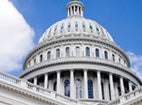The explosion of sensors that make up the Internet of Things (IoT) is creating a world of smart appliances, smart TVs and related smart gadgetry. Outside the home, you’ll find smart businesses, smart government offices, smart law enforcement and smart roadways along with other infrastructure elements with bigger brains than ever.
All of this eventually adds up to smart cities, which are on the cusp of a growth spurt, according to two consultancies.
First, IHS Technology predicts that the number of cities boosting their intelligence will quadruple in the next dozen years:
There will be at least 88 smart cities all over the world by 2025, up from 21 in 2013, based on the IHS definition of a smart city. While the combined Europe-Middle East-Africa (EMEA) region represented the largest number of smart cities last year, Asia-Pacific will take over the lead in 2025. In all, Asia-Pacific will account for 32 smart cities of the total in nine years’ time, Europe will have 31, and the Americas will contribute 25…
The bottom line is that there are different approaches to smart cities and the nature of the projects differs by region.
Navigant Research also recently released research on smart cities. The organization used a different metric than HIS—it compiled smart city technology revenue, not the number of smart cities—but the overall conclusions are similar. The report predicts that smart city revenue will grow from $8.8 billion this year to $27.5 billion in 2023.
The story offers a couple of illustrations of where municipalities and their vendor partners are taking smart technology:
In the US, for example, Cisco and officials in Kansas City signed a joint letter of intent (LOI) to establish smart street lighting and video surveillance, as well as provide digital interactive kiosks and mobile apps to boost citizens’ engagement. Cisco signed a similar agreement with the City of Hamburg in Germany.
Smart cities are moving from nice-to-have to the necessary category, at least according to Energybiz.com. The site provided a piece on smart cities with the observation that urban centers are growing due both to the general rise in population and the migration of people to cities.
This growth makes the use of electronics to manage myriad elements, which include “housing, transportation, water, fuels, electricity, communications, information, education, products, services,” an absolute necessity. Energybiz.com focuses on the impact of electronics on the electrical grid, but the bottom line is that the change is transformative, and the implication is that similar transitions are possible across the board.
It seems that there are virtually limitless applications for smart technology. Vendors and manufacturers understand this, of course. For instance, this week Schneider Electric said it will build a Center of Excellence for smart cities in Barcelona. Schneider already works with more than 200 cities on smart city projects.
Smart cities are the natural evolution of the granular sensor technology that is boiling up from below. Expect it to grow by leaps and bounds during the next decade.
Carl Weinschenk covers telecom for IT Business Edge. He writes about wireless technology, disaster recovery/business continuity, cellular services, the Intenet of Things, machine-to-machine communications and other emerging technologies and platforms. He also covers net neutrality and related regulatory issues. Weinschenk has written about the phone companies, cable operators and related companies for decades and is senior editor of Broadband Technology Report. He can be reached at cweinsch@optonline.net and via twitter at @DailyMusicBrk.



